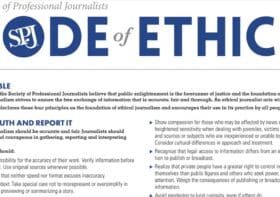Evolution of News Reporting: Decade-by-Decade Overview from 1950s to Today

1950s:
- News: Predominantly sourced from newspapers, radio, and nascent television. Emphasis on local and national events, with a slower news cycle ensuring more fact-checking.
- Opinion: Editorials and op-ed sections in newspapers were the main outlets for opinions. Clear distinctions were typically made between news and opinion pieces.
- Entertainment: Entertainment was largely separate from news, with distinct programs and segments for each on radio and television.
- Monetization: Revenue derived primarily from advertising and newspaper sales.
- Journalistic Integrity: A high premium placed on accuracy and a journalist’s code of ethics. News was intended to inform rather than entertain or persuade.
1960s:
- News: Television began to rival newspapers as the primary news source. The Vietnam War and civil rights movement were extensively covered.
- Opinion: Commentary on social and political changes became more pronounced, driven by societal upheavals.
- Entertainment: News programs began incorporating more human-interest stories, merging news and entertainment slightly.
- Monetization: Television advertising became more lucrative, influencing the type and style of coverage.
- Journalistic Integrity: The role of the media as a government watchdog was solidified, especially with reports critical of the Vietnam War.
1970s:
- News: Continued dominance of television, with cable TV emerging. Coverage of events like Watergate had a significant impact.
- Opinion: Investigative journalism surged, with journalists offering deeper analyses and sometimes personal perspectives on events.
- Entertainment: The lines blurred further with the rise of talk shows and magazine-style programs.
- Monetization: Syndication in television introduced new revenue streams.
- Journalistic Integrity: Events like Watergate reinforced the importance of media integrity, but the lines between news, entertainment, and opinion began to blur.
1980s:
- News: 24-hour news channels, like CNN, emerged.
- Opinion: News commentary shows became popular, allowing for extended analyses and debates.
- Entertainment: Infotainment grew, blending information and entertainment seamlessly.
- Monetization: Cable subscriptions added to traditional advertising as a significant revenue source.
- Journalistic Integrity: The speed of the 24-hour news cycle began challenging traditional fact-checking processes.
1990s:
- News: The advent of the internet began to shift the news landscape, though print and TV remained dominant.
- Opinion: Online forums and early blogs allowed more people to voice opinions, democratizing commentary.
- Entertainment: Reality TV boomed, further blurring lines as real events became entertainment.
- Monetization: Online advertising emerged, though it was still in its infancy.
- Journalistic Integrity: The proliferation of sources made fact-checking more challenging, leading to debates on media reliability.
2000s:
- News: Digital news platforms grew, with traditional outlets creating online presences and new digital-only outlets emerging.
- Opinion: Blogs and social media platforms gave voice to a wider range of opinions, often with little oversight.
- Entertainment: News websites incorporated video, graphics, and interactive elements to engage readers.
- Monetization: Paywalls, sponsored content, and digital advertising became prevalent.
- Journalistic Integrity: The distinction between professional journalists and amateur bloggers or commentators became a significant discussion point.
2010s-Present:
- News: Social media platforms became primary news sources for many, leading to faster dissemination and consumption.
- Opinion: The line between news and opinion further eroded, with social media algorithms often promoting sensational or biased content.
- Entertainment: Viral news stories, often blending entertainment and news, became commonplace.
- Monetization: The rise of native advertising, influencer partnerships, and subscription models.
- Journalistic Integrity: Concerns over “fake news” and media literacy dominated discussions, emphasizing the importance of critical consumption of news.
Conclusion:
The progression from the 1950s to today underscores how media, influenced by technology, society, and economics, has not only reported news but also attempted to dictate how we think and what we believe. This blurring of news, opinion, and entertainment is problematic. It’s essential to recognize that it is we, the audience, who define the reality of what transpires around us, and not merely accept what is presented.

